Hasegawa 1/48 Fw-190A-3
In the fall of 1941, just as the RAF was beginning to get a handle on dealing with the Messerschmitt Bf-109F in its “Non-Stop Offensive” (called by the Germans with good reason “The Nonsense Offensive”), a new player arrived on the scene: a low wing, highly-maneuverable, speedy radial-engined fighter. In his autobiography, “Wing Leader,” Johnny Johnson recorded that pilots were outraged when RAF “Intelligence” tried to explain away this new super-fighter as being old Curtiss Hawk 75s previously operated by the French Air Force that had been taken over by the Germans as a result of their “fighter shortage.” The only maneuver a Spitfire V could perform better than the new fighter was turning, and as Wing Leader Al Deere commented, “turning doesn't win battles.” The airplane was Kurt Tank's Fw-190, known to the Germans as “the second iron in the fire.” Goering, who was afraid the British might learn of the airplane if one crashed in England, issued an order in June 1942 forbidding an Fw-190 pilot from flying further from France than the midway point of the English Channel.
The Fw-190 was so clearly superior to the Spitfire Mk.V that RAF Fighter Command was forced to curtail operations between November 1941 to March 1942, and again from 13 June 1942 because of unacceptably high losses that were reminiscent of the losses 25 years earlier over the Somme during “Bloody April,” against the Luftwaffe's new "Butcher Bird". The British were so keen to get hold of one and learn its secrets that there was serious planning for a commando raid on a German Channel airfield, to capture one and have test pilot Jeffrey Quill fly it back to Britain.
On June 23, 1942, Leutnant Armin Faber, Gruppe Adjutant of III/JG 2, saved them the effort. Faber, whose staff job kept him out of the cockpit more than he liked, talked his way onto a flight when 7./JG 2 scrambled to respond to a British air raid of 12 Bostons and their escorting Spitfires. On takeoff he discovered his radio was out, but he continued on. The British force was intercepted and a wild fight developed over the Channel with the escorting Spitfires. Trying to get back to France but actually flying north toward England, Faber was attacked by Sergeant František Trejtnar of 310 Squadron. Faber flew north over Exeter in Devon, trying to get away. Finally he pulled an Immelman turn into the late afternoon sun and shot down Trejnar in a head‑on attack. Trejnar baled out safely, but Faber, disoriented, mistook the Bristol Channel for the English Channel and flew north instead of south. Believing he was over France instead of South Wales, he turned towards the nearest airfield, which turned out to be RAF Pembrey. Those on the ground couldn't believe their eyes when Faber executed a victory roll over the field, lowered his gear and landed.
In the control tower, F/Sgt Jeffreys, the Pembrey Duty Pilot, grabbed a Very pistol, ran across the field and jumped onto the wing of Faber's aircraft as it taxied in. The amazed Faber climbed out with his hands held high.
Faber's airplane was so new it still had the “new airplane smell” in its cockpit, with the Werke nummer 313. It was disassembled and trucked to Farnborough after Group Captain Hugh Wilson refused the duty after he was asked to fly it from Pembrey to Farnborough under the guarantee not to crash.
Testing and evaluation of the airplane began on July 3, 1942 at the Royal Aircraft Establishment. Nine flying hours were recorded over ten days, which provided the RAF with extremely valuable intelligence. The airplane could indeed outmaneuver and outfly the Spitfire V in everything but turning radius, and was so closely matched to the new Spitfire IX that the outcome of any fight between the two types would depend on individual pilot skill. Adding insult to injury was the discovery that the BMW 801 engine had been de-rated from 1,650 to 1,400 h.p. to prolong the life of the engine!
The Fw-190 was then transferred to the the Air Fighting Development Unit for tactical assessment. It was flown 29 times between July 3, 1942 and January 29, 1943 after which it was partially dismantled and tests done on engine performance at Farnborough. It was struck off charge and scrapped in September 1943.
There has long been controversy over this story, with some sources alleging that Faber actually defected with his airplane as part of a plot pulled off by British Intelligence. However, the facts are that Faber became a POW and was transferred to Canada, where he made two unsuccessful escape attempts and then managed to convince his jailers that he suffered from epilepsy. He was repatriated to Germany in 1944, where he rejoined the Jagdwaffe and resumed flying combat.
The forward part of the Faber Fw-190 cockpit was preserved and later obtained by the Shoreham Aircraft Museum at Shoreham Village near Sevenoaks, Kent where it is on display. On September 21, 1991 Armin Faber visited the Museum and donated his Officer's dagger and pilot's badge for the display.
This is the Hasegawa kit, "modernized" from the Dragon kit. As an early Fw-190A, it is finished in 71/02/65 camouflage. The model is OOB other than using Eduard seatbelts and decals from an Aeromaster sheet to do Faber's airplane, the best "gift" the British ever got. It influenced the development of the Hawker Tempest II and Fury/Sea Fury as well as the American F8F Bearcat.
I personally think Hasegawa does the best Fw-190s in any scale. In 1/48, the competition is the very-fiddly Dragon kit that is easy to get unfixably wrong if you take your eye off the ball during assembly. The Tamiya kit assembles easily but has landing gear that is too short, which destroys the final look of the model. The Hasegawa is easier than the Dragon, almost as easy as the Tamiya kit, and with its proper-length gear it looks right in the end. The model is an easy weekend project, if CINC Home doesn't have too many “honey-do's” for you. (the above was written in 2013) Of course now the new Eduard 190s blow the socks off the competition.
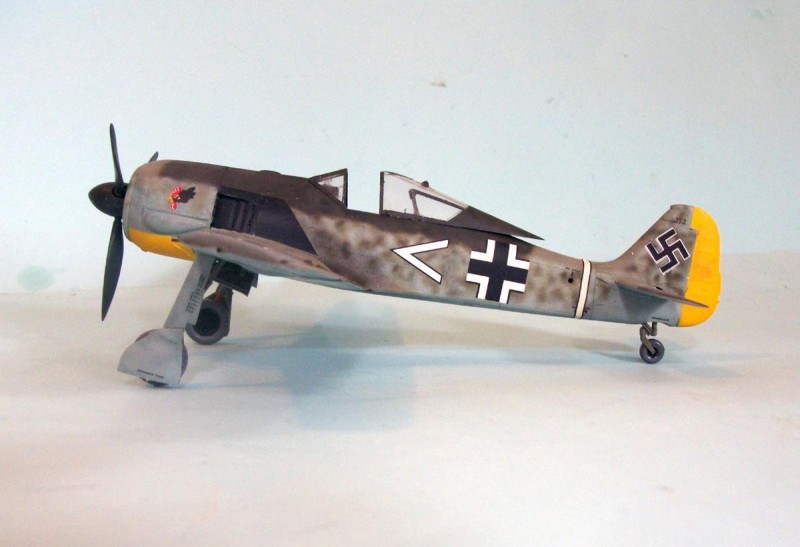
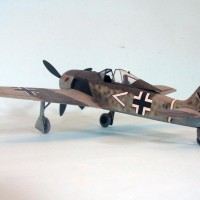
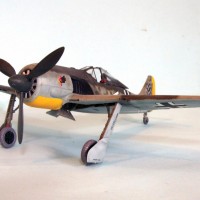
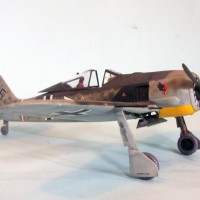
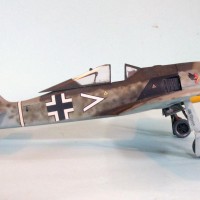

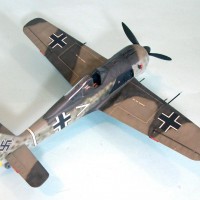
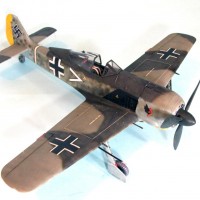
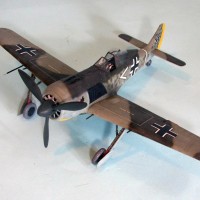
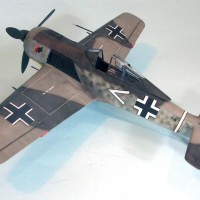
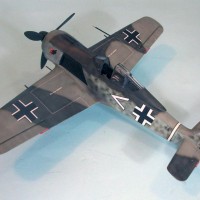
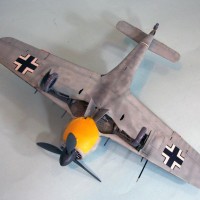
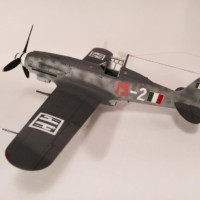
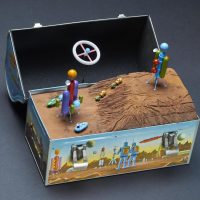
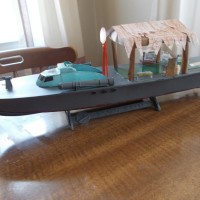
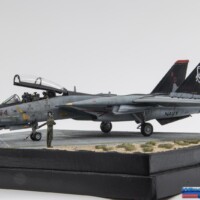
Tom,
I always enjoy the background you provide from your vast knowledge of vintage war birds and the stories around them. That and your building skill provide magical representations. Great build Partner.
Old Hollywood rule: "Flattery will get you everywhere." 🙂
Thank you much, I know the old rule above doesn't apply here, my friend.
Very nicely presented/built/finished, TC...I like it.
Nice Tom. I'm doing this as it appeared in RAF markings. Hope to have it done soon.
That's going to look cool.
Quite a few images of captured 190s - these might be F-8s in 1945 but can’t be sure.
2 attached images. Click to enlarge.
PS nice build, Tom.
a lovely 190 Tom!
Great job!
Nice work. And thanks for the interesting back story. I have a hasegawa A3 and my references said they are the best FW190's versus Tamiya and Eduard but my book was published before the new (tooled) FW190s from Eduard without the engines. So perhaps Eduard has grabbed the lead here?
That is waaaayyyyy old news. Eduard's new kits blow Tamiya's out of the water. Correct-size wheels, correct-size landing gear legs, more detailed cockpit and better surface detail.
I'm constantly amazed that more people don't realize that "easy to build" and "accurate" are two different topics with no connection to each other. When Tamiya was pumping out kits in the 90s in their "war" with Hasegawa, every single one of their kits had a Major Mistake (and the new ones do, too) that any other manufacturer got raked over the coals for if they did anything similar, but the vastly-overrated Tamiya kits always get a "pass". Go figure.